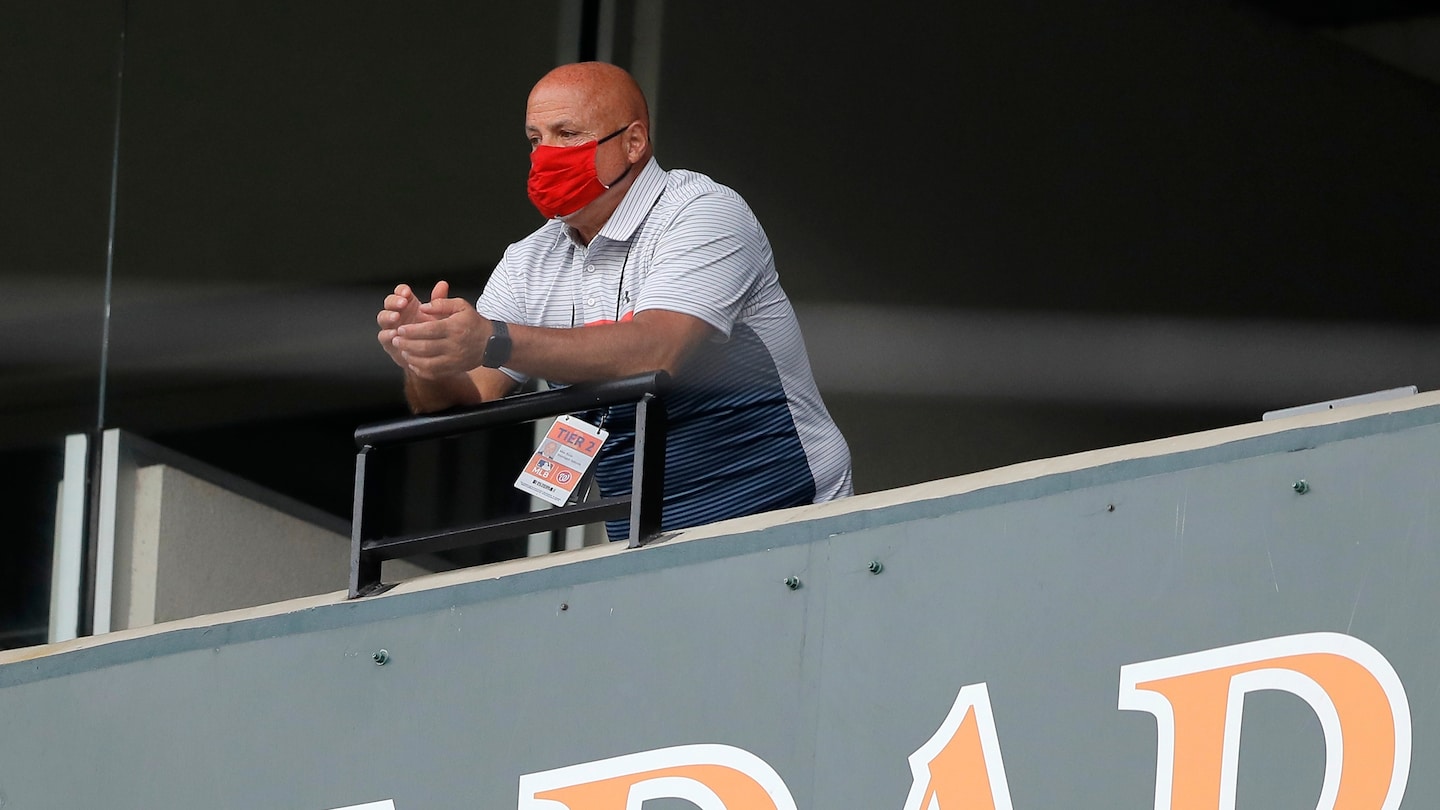The Nationals rely on the ‘eye test’ to scout players. That’s not an option this year.

Then Pomeranz made his first relief appearance of the season, having left the Giants’ rotation with a 6.10 ERA in 17 starts. Pomeranz faced six batters in two innings, struck out four and had McKeon finding a quiet spot to call General Manager Mike Rizzo. The lefty looked electric. And just like that, the Nationals had a new top target.
“Pomeranz just came out of the bullpen and was lights out,” Rizzo recalled McKeon telling him. “We got to get this guy.”
The Nationals didn’t acquire Pomeranz. The price was too high. But that they keyed on him after an in-person scouting trip is relevant now, the last week of August, with the deadline looming at the end of this month.
Scouts are not allowed inside ballparks because of the novel coronavirus pandemic. So a team like the Nationals, relentlessly reliant on the “eye test,” is instead sorting through video, analytics and contacts to assess players at a critical point of a 60-game season. They need a reliever or two, could use a depth starter and would benefit from a veteran bat, if the front office still feels, as it did a short while ago, that a stumbling club is worth adding to.
Rizzo, one of the last GMs with a scouting background, has lamented the lack of access for scouts in 2020. He hardly ever chases a player unless one of his trusted guys has seen him recently. The Nationals will then often get a second or third in-person opinion before making offers. But this year, with everything jumbled, the Nationals will have to trust a new process. It goes against their core beliefs.
“Obviously it’s much more difficult to make an assessment and evaluation with those means of viewing a player,” Rizzo said of watching video in place of live games. “So we have to really trust our scouts, we have to trust the backgrounds that we’ve had on players, hope we have a history of a player that you’re acquiring, not only the last couple of weeks of this season but in the past.”
Looking for pitching last July, the Nationals liked Pomeranz, Chicago White Sox reliever Alex Colomé and Cincinnati Reds starter Alex Wood, among others. They made deals for Colomé and Wood that fell through the night before the deadline. The White Sox upped their ask and the Reds, having added starter Trevor Bauer, wanted to keep Wood for a playoff push. That sent the Nationals scrambling for answers, and they landed on Daniel Hudson, Roenis Elías and Hunter Strickland for a group of a low-ranked prospects.
Washington had eyes on each pitcher. Their research on Strickland, though, shows a scouting method unavailable in 2020. He had made just four major league appearances while dealing with a Grade 2 lat strain. Three were in the March, in the first days of the season, while the last one came July 28, right up against the deadline. But the Nationals had someone at his rehab stint with the Class AAA Tacoma Rainiers. They felt that was enough to gauge his velocity, the bite on his slider and how he had recovered from the injury before taking a run at him.
Now, with no minor league season, about 30 extra players are training at each team’s alternative site. Scouts can’t go to those, either, unable to see intrasquad games or bullpen sessions. In early August, MLB set up a video and data sharing network between alternate sites, giving teams the ability to gather fresh information and tape on players. Teams could choose whether to opt in or not, and the Nationals declined to disclosed if they did. They can only trade players who are in their 60-man pools, but can add available players to it while a deal is being processed.
“The whole situation is fraught,” said an American League scout who spoke under the condition of anonymity to avoid repercussions from his club. “Even if you get data or video from an alternate site, you’re now trusting your competitors to give you the right angles, the right numbers, and on and on? Everything can be framed. We’re talking about teams who will do anything for the tiniest edge, an rightfully so.”
Nationals Manager Dave Martinez is tangentially involved at the deadline. Rizzo will ask for opinions on players Martinez has coached. If Martinez has recently faced them, and sunk into scouting reports, that’s even better. Martinez’s view of in-person assessment is two-pronged: You can gauge a players’ instincts, and closely observe his demeanor and how he interacts with teammates.
Maybe that’s watching him after a strikeout. Maybe it’s following his behavior in the dugout. Martinez recently noted that the Nationals will “sit on” a player for a week to 10 days if interested, underscoring their commitment to in-person scouting. They use it to both confirm or complement what’s gleaned from video and their data analysts. But when Martinez watched tape, he finds himself zeroing on one aspect and missing many others.
“All they’re seeing is them playing,” Martinez said of how TV narrows the scouting lens. “For me, I know what kind of hitter or what kind of pitcher a pitcher is. But what does he do outside of that?”
So that’s absent now — the ability to track a player once the camera moves on. That, and a calculated exchange of information, as multiple scouts say they love to chat with one another at the field. (You would too, if you spent half of most years in a Courtyard Marriott.) While stationed at home, providing feedback from offices, living rooms and kitchen tables, a critical part of the process is watered down.
Without admission to Oracle Park, the Nationals may have never fell for Pomeranz, who had a 2.39 ERA in 25 appearances for the Milwaukee Brewers after the deadline. Who knows that they’re missing this year.






